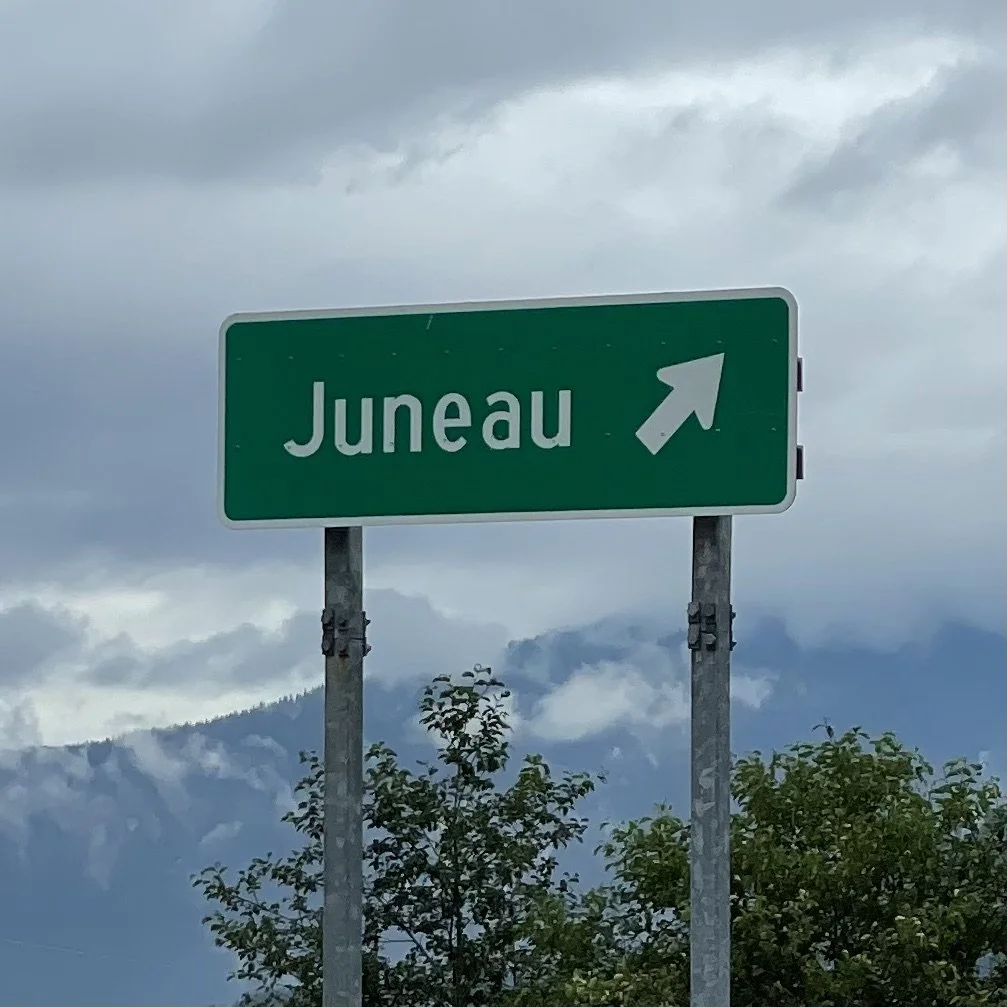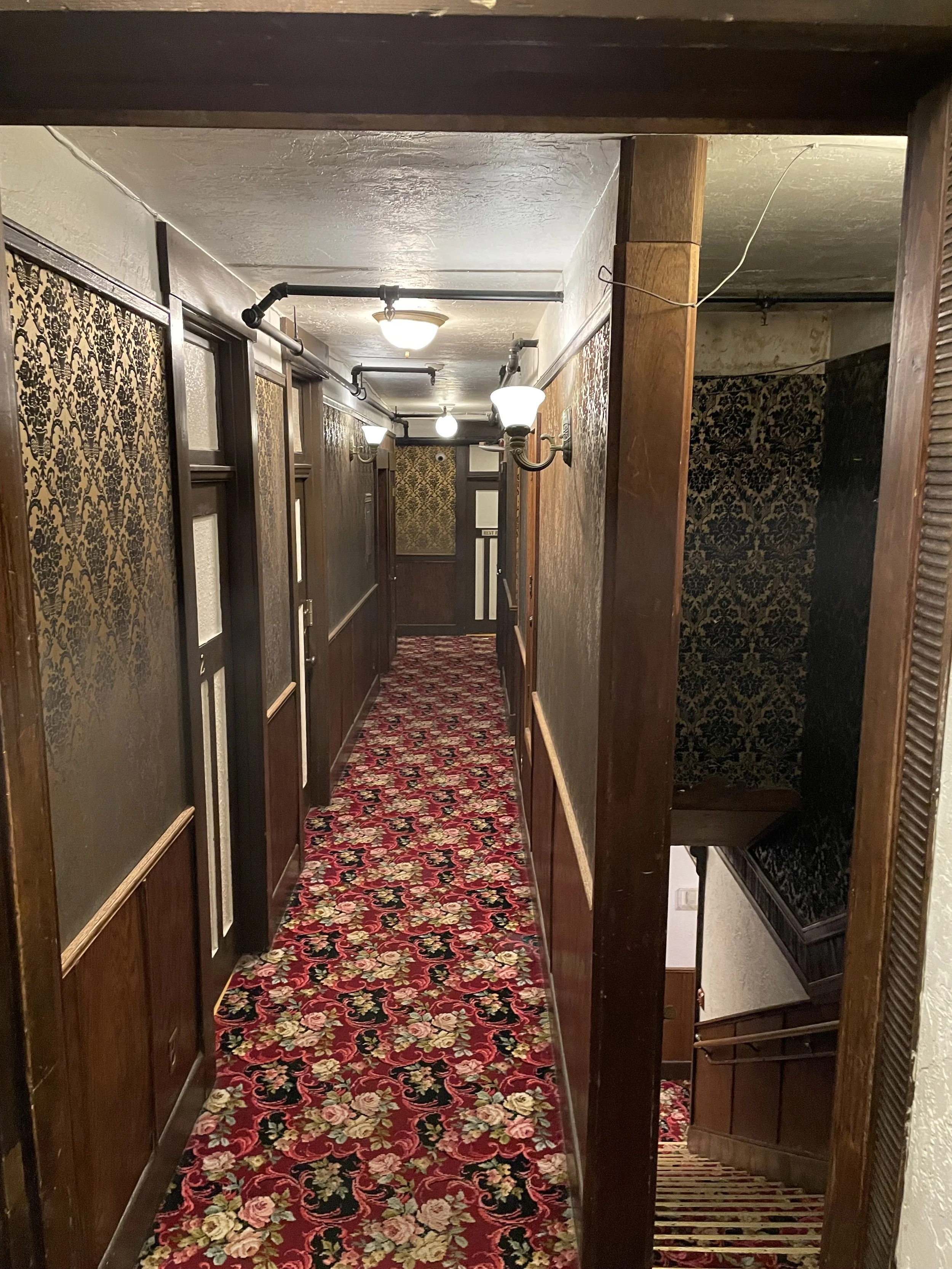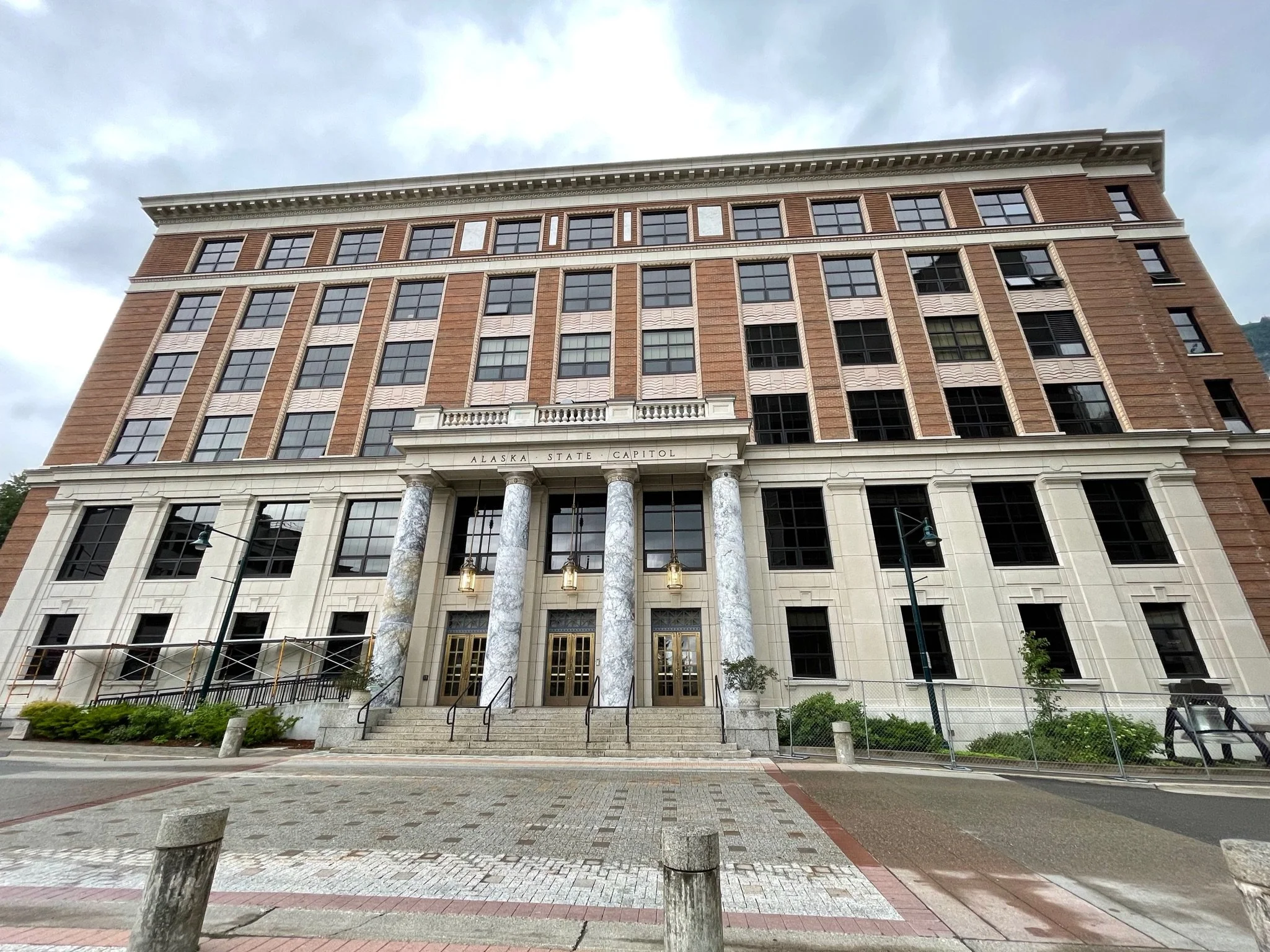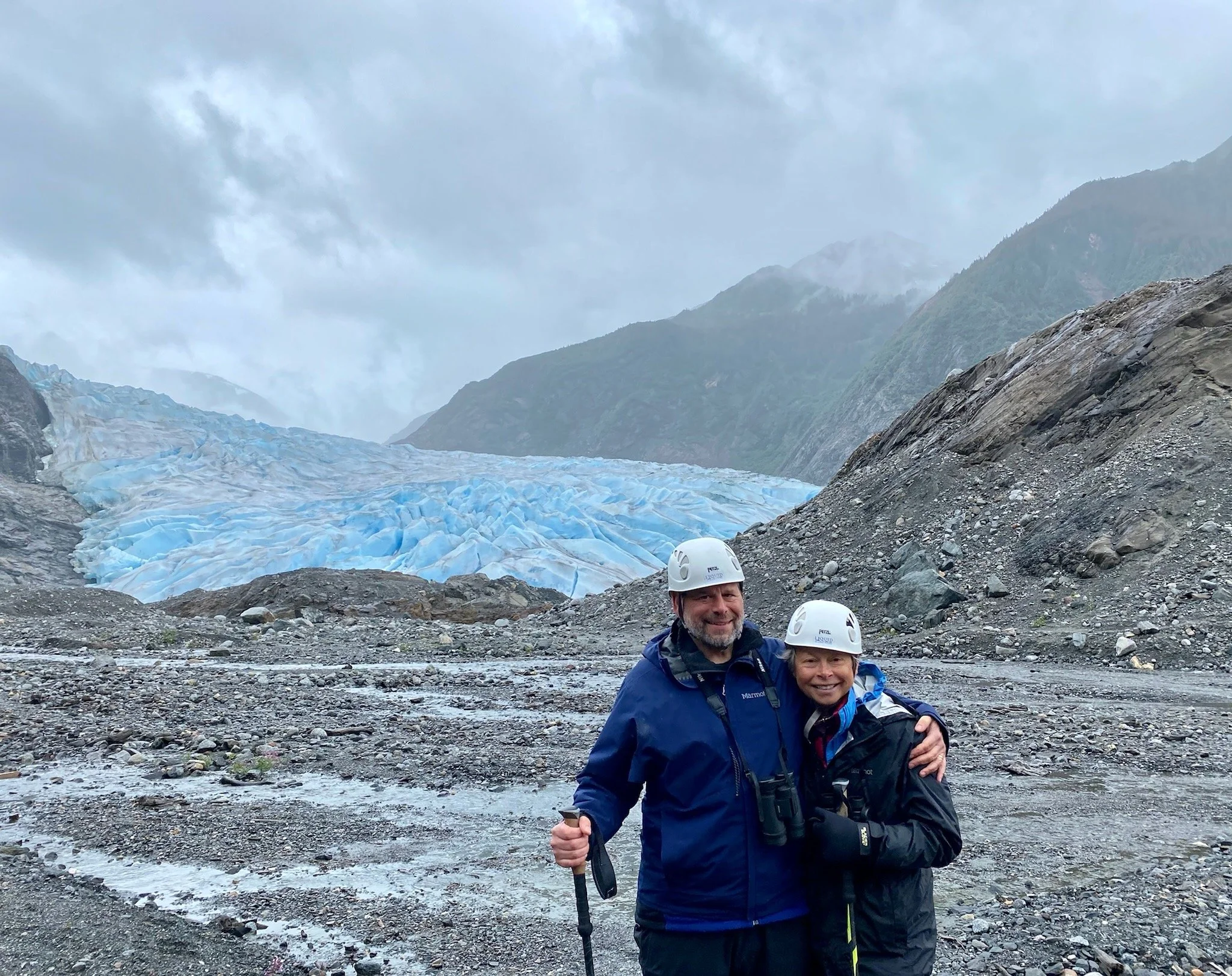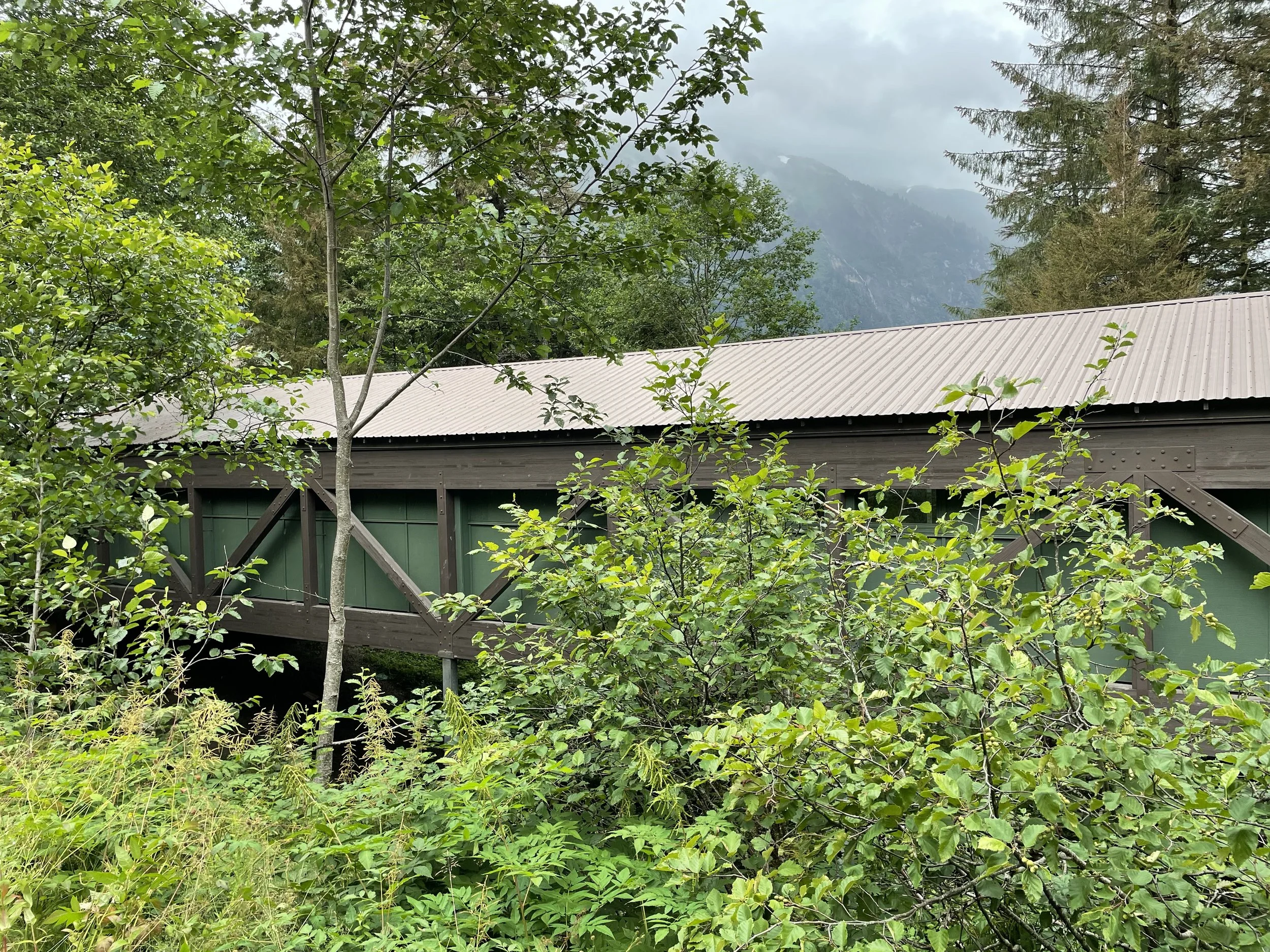Juneau, Alaska – Week 5
Eagles? Humpback Whales? Cruise Ships? Many, many cruise ships? Yes!
Jew? No.
Or perhaps it would be more accurate to say, Jew, not so much. But more on that later.
Last Friday we jumped on the state-run Alaska Marine Highway System Ferry (also known as the cruise ship for the rest of us) and shortly thereafter we were sailing down the Lynn Canal aboard the Le Conte beginning our nearly six-hour journey from Haines to Juneau.
The LeConte is a large vessel with seating on two decks including a ‘solarium’ where one can sit on the deck but under warm lamps on lounge chairs watching the stunning scenery go by. We didn’t move fast enough to get one of those coveted seats and ended up on comfy chairs inside but still plenty of windows to gawk at the snowcapped mountains on both sided of the ship. At dinner time a cafeteria opened offering fresh-made sandwiches and burgers and some salads and sweets. I contented myself with a cheese sandwich from our own provisions which I wrapped up in a napkin and heated in the microwave. I also helped myself to the condiments like mustard and pickle relish and stashed away a few packets of mayo in case we decided to whip up some tuna salad in Juneau.
The trip went by quickly and when we arrived in Juneau it was still broad daylight though it was after 9 pm. There is no bus or public transport that runs from the dock to downtown which is more than 20 km away so as we pulled into the dock, I summoned a Lyft with my phone and Kevin pulled into the lot in his Jeep Liberty just as we stepped off the ship. Fifteen minutes later we checked into our hotel.
The Alaskan Hotel and Bar bills itself as the oldest hotel in Juneau. Built in 1913 the decor still suggests the brothel it once was. It is a rambling wooden structure and we are in a strange room on the 3rd floor in what appears to have once been the attic. There is a tiny bathroom, and then an even smaller room that has a shower. We got a room with a kitchenette planning to save money by preparing at least some of our own food. There is a stovetop and oven, a fridge, and a sink. However, the sole item in the batterie de cuisine was a small saucepan with a lid. There were also two paper plates for our five day stay and two plastic forks. We were happy to wash the forks but the plates were sure to get grotty quickly. The saucepan was a least sufficient to boil water for our drip coffee and the hotel description promised that more cooking things were available on request.
We spent the next day getting oriented. There is a tram that rises from down near the cruise ship docks to the top of a nearby mountain, but being tough we decided to walk up the trail. It was a steep 3 km climb to the top (maybe 4 including the walk from town to the trailhead from town) but the path was not too muddy and easy to follow even in a light rain. At the top was a beautiful view of Juneau and a gift shop and restaurant. We watched a short film about the history the native Tlingit people and then hiked down again.
I remember reading a novel once where a town was described as being as compact as a box of dominoes. (I don’t remember which novel and even an internet search doesn’t reveal the answer. Ten points to the person who posts it below.) At any rate that is what Juneau reminds me of. For a state capital it is tiny and the tourist gift shops outnumber the state office buildings by many times. And why not? Five massive cruise ships pull into the docks here every day. Those thousands of people need to buy trinkets, t-shirts, smoked salmon-in-a-can, and, yes, cannabis. There is a ‘kush’ shop right next door to our hotel and a bar or a liquor store every 100 meters in the downtown. Also, lots of shops selling candy, ice cream, and fudge. Whatever your indulgence, you will find it on the main drag.
The state buildings including the Capitol and the Governor’s ‘Mansion’ are half a kilometer up the hill where few tourists venture, though, of course, we did. The Governor’s Mansion is a nice looking house though I have seen grander residences in Bethesda, Maryland, and the Capitol looks much like a mid-20th Century high school building.
The town is pressed right up against a mountain and mostly built on fill dirt dug out of the gold and copper mines of the 1800s and dumped into the sea. A walk in any direction for more than a few minutes begins a steep incline.
Southeast Alaska is also the world’s most northern rain forest. It rains a lot! It has rained every day that we have been in Juneau. Sometimes a steady downpour. Other times just a light Scottish mist. Although the hours of daylight are many, we have yet to see the actual sun.
On Sunday we headed out for the tour we booked to the Mendenhall Glacier. We were with a small group of 15 people and two guides, Kelby and Bryce (nice young people) who loaded us into a (yikes) a 15-passenger van and drove us out to Mendenhall Lake, which sits right in front of (and is fed by) the glacier. We donned rain pants, rain jackets, boots and gloves, and all climbed into a gigantic canoe which we paddled for about 40 minutes across the lake to the foot of the glacier. The glacier is a massive chunk of blue ice that is retreating (i.e. melting) at a rate of nearly 35cm a year. We hiked up to the very edge of the glacier but didn’t hike on it due to its instability (you don’t want to end up under 500 kilos of ice) but we did stand on some ice so I guess technically we stood on the glacier. I was glad to have seen it while it was still there.
Back at our hotel, we requested some kitchen items with which to cook. I envisioned a box of various pots and pans, cutlery, a chef’s knife, and a cutting board. Maybe even some basic condiments like salt and pepper.
Fifteen minutes later housekeeping showed up with one frying pan and two more paper plates. Some creativity would be called for in the preparation of gourmet meals.
One of the pleasures of traveling as we are is that we stay in each place just as long as we want. Some of our companions on the glacier tour who were on cruise ships were bemoaning the fact that they got only a part of one day in Juneau. But with no time pressure, we didn’t mind a unprogrammed morning on Monday enjoying another hike along a narrow mountain road that had been built for gold miners. The outbound was all uphill for the reasons noted above and climbed up into the low clouds where waterfalls and cascades tumbled from the mists. Just a short walk from downtown, we saw few hikers and those we did see seemed to be locals walking with their dogs or their children. In the afternoon, we took a whale watching trip on a small boat and saw 10-12 humpback whales very close up and a colony of sea lions loafing at their ease on a buoy. Dinner was a splurge at a lovely restaurant serving southwestern Indian cuisine.
With the frying pan and my pocket knife and our handy go-everywhere sporks, we managed to cook up some nice breakfast and lunches (including tuna salad using the mayonnaise knicked from the ferry) but we have dined out here more than the whole rest of the trip combined. On the plus side, we are not spending $70 per day to fill the van with gasoline so I guess that balances things out somewhat. Most of the dining out has been things like fish tacos or avocado toast so the costs have been relatively modest.
When we arrived, I thought it might be interesting to check out the Jewish life situation in Juneau. However, an internet search revealed little but a reform synagogue called Sukkat Shalom and although the website said that all are welcome, there was no address for the shul listed on the site. Beyond that one shul, there were no kosher restaurants, no JCC, not even a Chabad that I could find.
Today, was our last full day in Juneau and with no structured plans we again set out for a hike. The morning was overcast but the rain was holding off which seemed promising. The hike we chose was in Douglas just across the inlet and we decided to take the public transit bus to get there ($2 each). As we got off the bus we started to walk (uphill, of course) through a nice suburban neighborhood, there it was, Congregation Sukkat Shalom built in what appeared to be a covered bridge-like structure suspended over a rushing stream! It was beautiful but also desolate with no signs of life, not even a car in the parking lot. We took a few photos but didn’t try to make contact.
The last cruise ship departs Juneau sometime in September and the moment it does, all the shops downtown Juneau close and are boarded up for the winter but today the streets are packed with the visitors who spend many thousands of dollars each year here. Juneau is finely tuned to extract wealth from the tourists the way the miners of old extracted gold from the hills that soar above us. Take what is of value and toss the dross back into the sea.
Early tomorrow we too will return to the sea for the trip back to Haines where our campervan is waiting. If all goes without a hitch, we will drive back into Canada in the afternoon to continue on to the interior of Alaska heading toward the Kenai Peninsula. We are looking forward to sleeping once again in our own bed, albeit on a mattress that is only a few centimeters thick, and getting back to food prep using our well stocked galley. Relying on hotels and restaurants here in Juneau, we have been living in deprivation. Time to get back to a more luxurious level of travel.
